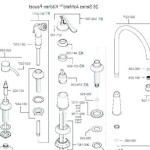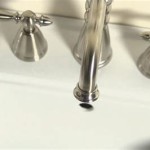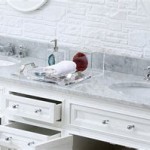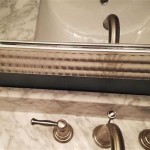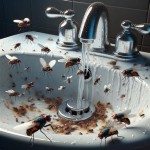What Professionals Use to Clean Bathrooms: A Comprehensive Guide
Maintaining a clean and sanitary bathroom is crucial for both residential and commercial settings. Professionals in the cleaning industry possess specialized knowledge, techniques, and equipment that ensure bathrooms are thoroughly cleaned and disinfected. Understanding the tools and products they employ can provide valuable insights for anyone seeking to improve their bathroom cleaning routine.
Selecting the Right Cleaning Solutions
Professionals rely on a variety of cleaning solutions to address the diverse cleaning challenges presented by bathrooms. These solutions are carefully selected based on their effectiveness, safety, and suitability for different surfaces. The choice of cleaning agent depends on the specific task at hand, such as removing soap scum, disinfecting surfaces, or tackling hard water stains.
Disinfectants:
Disinfectants are essential for eliminating bacteria, viruses, and fungi that thrive in the moist environment of a bathroom. Professionals typically use EPA-registered disinfectants that are proven to kill a broad spectrum of pathogens. Quaternary ammonium compounds (quats), hydrogen peroxide-based cleaners, and diluted bleach solutions are commonly employed. The concentration and dwell time (the amount of time the disinfectant needs to remain on the surface to be effective) are carefully considered to ensure proper disinfection without damaging surfaces.Acidic Cleaners:
Acidic cleaners are particularly effective at removing mineral deposits, such as hard water stains, rust, and calcium buildup. Professionals often use products containing hydrochloric acid, phosphoric acid, or citric acid for these tasks. However, acidic cleaners must be used with caution, as they can damage certain surfaces like marble, natural stone, and some metals. Proper ventilation and the use of personal protective equipment (PPE) are crucial when working with acidic cleaners.Alkaline Cleaners:
Alkaline cleaners, also known as degreasers, are formulated to dissolve grease, soap scum, and other oily residues. These cleaners typically contain sodium hydroxide, potassium hydroxide, or other alkaline substances. Alkaline cleaners are effective for cleaning shower walls, floors, and other surfaces where soap scum accumulates. Like acidic cleaners, alkaline cleaners can be corrosive and should be used with care, following the manufacturer's instructions.Neutral Cleaners:
Neutral pH cleaners are gentle and versatile solutions that can be used on a wide range of bathroom surfaces. They are effective for general cleaning and maintenance and are less likely to damage sensitive materials. Many professionals use neutral cleaners for daily cleaning tasks and for surfaces that cannot tolerate acidic or alkaline solutions. These cleaners often contain surfactants that help to lift dirt and grime without leaving a residue.Specialty Cleaners:
For specific cleaning challenges, professionals may use specialty cleaners formulated for particular tasks. Examples include toilet bowl cleaners, grout cleaners, and mold and mildew removers. These products are designed to target specific types of stains and contaminants and often contain specialized ingredients to enhance their effectiveness. When using specialty cleaners, it is essential to follow the manufacturer's instructions carefully and to test the product on an inconspicuous area first to ensure it does not damage the surface.Professionals also understand the importance of diluting cleaning solutions correctly. Using too much cleaning product can leave a residue and may not necessarily improve cleaning effectiveness. Proper dilution helps to optimize the cleaner's performance while minimizing waste and potential damage to surfaces.
Essential Tools and Equipment
In addition to the right cleaning solutions, professionals rely on a variety of tools and equipment to achieve thorough and efficient bathroom cleaning. These tools are chosen to maximize cleaning power, reach difficult areas, and protect the cleaner from exposure to harsh chemicals.
Microfiber Cloths and Mops:
Microfiber cloths and mops are essential cleaning tools for professionals. Microfiber is a synthetic material that consists of extremely fine fibers, making it highly absorbent and effective at trapping dirt, dust, and grime. Microfiber cloths are used for wiping surfaces, polishing fixtures, and removing cleaning solutions. Microfiber mops are used for cleaning floors and are often more effective than traditional cotton mops at removing dirt and bacteria.Spray Bottles:
Spray bottles are used to apply cleaning solutions to surfaces in a controlled and efficient manner. Professionals often use heavy-duty spray bottles that are resistant to chemicals and can withstand frequent use. Adjustable nozzles allow for different spray patterns, such as a fine mist for disinfecting or a focused stream for targeting specific stains.Scrub Brushes and Sponges:
Scrub brushes and sponges are used to agitate dirt and grime on surfaces. Professionals use a variety of scrub brushes, including stiff-bristled brushes for tough stains and soft-bristled brushes for delicate surfaces. Sponges are used for general cleaning and for applying cleaning solutions. Non-abrasive sponges are preferred to avoid scratching surfaces.Toilet Bowl Brushes and Cleaners:
Toilet bowl brushes are specifically designed for cleaning the inside of toilet bowls. Professionals use brushes with sturdy bristles and ergonomic handles for effective cleaning. Toilet bowl cleaners are used in conjunction with the brush to remove stains and disinfect the bowl. Some professionals also use toilet bowl wands with disposable cleaning pads for a more hygienic cleaning process.Squeegees:
Squeegees are used to remove water and cleaning solutions from shower doors, mirrors, and other glass surfaces. Using a squeegee helps to prevent water spots and streaks, leaving surfaces clean and shiny. Professionals typically use high-quality squeegees with durable blades for optimal performance.Personal Protective Equipment (PPE):
Protecting themselves from exposure to chemicals and pathogens is a top priority for cleaning professionals. PPE includes gloves, eye protection, and masks. Gloves protect the hands from contact with cleaning solutions and bacteria. Eye protection, such as safety glasses or goggles, prevents chemicals from splashing into the eyes. Masks protect the respiratory system from inhaling fumes and airborne particles. Professionals choose PPE that is appropriate for the specific cleaning task and that meets safety standards.Vacuum Cleaners:
Vacuum cleaners are used to remove loose dirt, dust, and debris from bathroom floors and other surfaces. Professionals often use vacuum cleaners with HEPA filters to trap allergens and other microscopic particles. Vacuuming before wet cleaning helps to prevent dirt from being spread around and makes the cleaning process more efficient.Steamer:
Steam cleaners can be used to disinfect and clean surfaces without the use of harsh chemicals. The high temperature of the steam kills bacteria and loosens dirt and grime, making it easier to wipe away. Steamers are particularly useful for cleaning grout, shower tiles, and other hard-to-reach areas.Detailed Cleaning Techniques
Professional bathroom cleaning involves a systematic approach that ensures all surfaces are thoroughly cleaned and disinfected. The cleaning process typically begins with a pre-cleaning step to remove loose debris and prepare the surfaces for cleaning solutions.
Pre-Cleaning:
Before applying any cleaning solutions, professionals remove loose dirt, dust, and debris from the bathroom. This may involve sweeping or vacuuming the floor, wiping down surfaces with a dry cloth, and removing any items that could obstruct the cleaning process. Pre-cleaning helps to prevent dirt from being spread around and makes the cleaning process more effective.Surface Cleaning:
Once the bathroom has been pre-cleaned, professionals apply cleaning solutions to the various surfaces. The specific cleaning solution used will depend on the type of surface and the type of stain or contaminant being addressed. The solution is typically sprayed onto the surface and allowed to dwell for a specified period of time. This dwell time allows the cleaning solution to penetrate and loosen dirt and grime.Scrubbing and Agitation:
After the cleaning solution has dwelled for the appropriate amount of time, professionals use scrub brushes, sponges, or microfiber cloths to agitate the surface and remove dirt and grime. The amount of scrubbing required will depend on the severity of the stain or contaminant. For tough stains, professionals may use abrasive scrub pads or brushes. However, care must be taken to avoid scratching or damaging delicate surfaces.Rinsing and Drying:
After scrubbing, the surfaces are rinsed with clean water to remove any remaining cleaning solution and dirt. Professionals may use a spray bottle or a damp cloth to rinse the surfaces. After rinsing, the surfaces are dried with clean microfiber cloths to prevent water spots and streaks. Squeegees are used to remove water from shower doors, mirrors, and other glass surfaces.Disinfection:
Disinfection is a critical step in professional bathroom cleaning. Professionals apply EPA-registered disinfectants to high-touch surfaces, such as toilet seats, faucets, door handles, and light switches. The disinfectant is allowed to dwell for the amount of time specified by the manufacturer to ensure proper disinfection. After the dwell time, the surfaces are wiped dry with clean microfiber cloths.Detailing:
The final step in professional bathroom cleaning is detailing. This involves paying attention to small details, such as cleaning grout lines, polishing fixtures, and removing any remaining streaks or smudges. Professionals use grout brushes to scrub grout lines and remove dirt and mildew. Metal polishes are used to shine faucets and other metal fixtures. Mirrors and other glass surfaces are cleaned with glass cleaner and polished with microfiber cloths to remove any streaks or smudges.Professionals adhere to a strict order of cleaning, typically starting with the highest surfaces and working their way down to the floor. This prevents dirt and debris from falling onto already cleaned surfaces. Regular cleaning of tools and equipment is also essential to prevent the spread of bacteria and maintain hygiene standards. They also follow safety protocols, including proper ventilation and wearing personal protective equipment, to minimize the risk of exposure to chemicals and pathogens. By following these detailed techniques, professionals ensure that bathrooms are thoroughly cleaned, disinfected, and maintained to a high standard of cleanliness.

Bathroom Cleaning S By Experts Bond In Melbourne

Steps Professional Cleaners Use To Clean A Shower Jdog Carpet Cleaning Floor Care

What Do Professionals Clean Bathrooms With Motherhood Malaysia

Bathroom Cleaning Tips By Professional House Cleaner

10 Things You Need To Know About Cleaning Commercial Bathrooms

5 Professional House Cleaning Tips To Keep That Bathroom Sparkly Clean Cleaners Near Me

Pro Toilet Cleaning Tips House Bay Terrace Ny

How Do Cleaning Companies Clean Bathrooms Executive Maids

How To Clean A Toilet Maid2match

How To Clean A Toilet Like Professional Scrub Pros Janitorial Service
Related Posts
